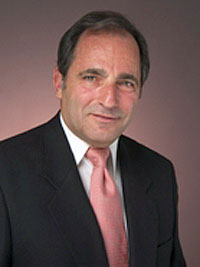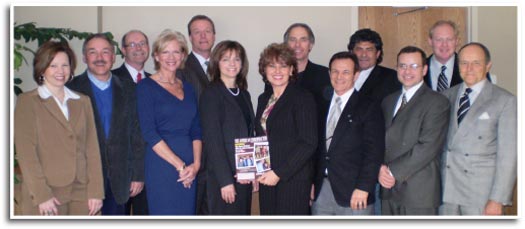Ask the Advisor Q&A with Lisa and Larry
by Larry Goodman, D.C.
Q: What can I do to bring more money into my practice?
A: Bringing more money into a practice usually means one of two things, possibly both: increasing the number of patients or increasing reimbursement per visit. If bringing in more patients is the answer, then new marketing programs would be effective. There are marketing programs out there anywhere from $50 to $3,000. There is a marketing program out there that uses the Internet search engines to bring you more patients, which ranges from $50.00 to $200.00 per month. There are also many companies out there that are willing to take you on a small term contract, just remember that when taking on a new vendor negotiate terms on every level. When talking to marketing companies, we feel that they are really quick to try and sell us something. Did you know that there are many companies out there that will do a complimentary marketing analysis? It is always helpful to see your practice through somebody else’s eyes. Allow yourself to get a free marketing analysis and ask what else the company offers.
Reimbursement per visit is usually not the same for every practice. It is important to understand the patients’ diagnosis’ and symptomology while keeping in mind what other services they may need. At the same time, it is important to keep in mind the payer mix that your practice has. There are some questions to ask yourself in order to determine what would enhance revenue for your office. Ask yourself how many types of products and services you send out to other doctors. Are there any of those things that can remain in house? There are a few things that you need to know:
You need to know how many patient visits you are doing a week
Insurance Plans that your patients are on (to make sure you are able to get on those plans)
Have you surveyed your patients to see if they would be able to utilize the services of an MD?
Q: I’m thinking of bringing an MD into my office. What are some things that I need to know before doing this?
A: Be aware of your cash flow. Be prepared to set up a budget, get information and do a cross analysis of how much a doctor is going to cost you. Know the hourly rate for a doctor and include the cost of malpractice insurance, and understand that the doctor will not be paying for him/herself for at lease 90 to 120 days.
Q: How can I cut my overhead without cutting service and efficiency?
A: There are a lot of programs out there that will actually increase efficiency and cut overhead. For example, one of the things that we recommend is an automated phone service that will actually confirm appointments for you. This alone will cut your administrative staff by 20 hours a week. This is also the time to look around your office and track your expenses so that you can try to save some money. Something that might seem very simple like changing a malpractice carrier can actually save you up to 25% to 30% alone.
Q: I am frustrated in my office because I am having a hard time with my collections and my colleagues have suggested that I search for a billing company. What are some of the things to look for in a billing company; they all seem so much alike?
A: First of all, the one question that everyone asks a billing company is what the percentage that they keep is. The percentage is important, but do not get fooled by a low percentage. Low percentage could mean low service. You want to know what the percentage is and if they collect, you have to make sure that they not only bill but they also collect. When you interview billing companies, find out what their appeals process is and if you are able to access that information at any time. Also, ask if they give you anything free, some billing companies will throw in an EMR system at no cost.
 Dr. Larry Goodman is a chiropractor and a psychologist who has been doing consulting and practice management for 15 years. He also works for the University of Miami. He is also the clinical director of Physicians Choice Concierge, which is a company specializing in revenue enhancement for chiropractors, medical doctors, and multi disciplinary practices across the nation.
Dr. Larry Goodman is a chiropractor and a psychologist who has been doing consulting and practice management for 15 years. He also works for the University of Miami. He is also the clinical director of Physicians Choice Concierge, which is a company specializing in revenue enhancement for chiropractors, medical doctors, and multi disciplinary practices across the nation.
Lisa Goldberg is the executive director of Physicians Choice Concierge (PCC) and All Care Consultants.
Dr. Goodman is the lead advisor for PCC, a company specializing in revenue enhancement for chiropractors, medical doctors, and multi disciplinary practices across the nation. All Care Consultants specializes in physician staffing and placement. If you have a question you’d like Lisa and Larry to answer in an upcoming issue, email to: lisa@allcare


 many other extreme health challenges! On the cover is Dr. Gary Deutchman and Dr. Marc Lamantia who have written a book called A Home Educators Guide to Scoliosis, which is a book that helps teach parents how to screen their children at home for Scoliosis and Kyphosis. Tracy’s daughter, Marlaina, age 17, can be found on pp. 24-26, where you can read about her first case study with Dr. Dennis Woggon at the St. Cloud Clear Institute! Dr. Woggon is constantly using new techniques and strategies to improve the curve in young and old spines. Sometimes, when not used correctly, chiropractic can actually be contraindicative when Chiropractors have the best of intentions. Othertimes, Scoliosis and all health challenges take a lot of continued care and oftentimes many different techniques used together are the best solution! For this reason, in the next issue, TAC will also have some candid pictures of our visit to NY to see Dr. Deutchman and Dr. Lamantia, at Scoliosis Systems, who will be fitting Marlaina with a SpineCor Brace to further improve and stabilize the curve in her back between visits to see Dr. Woggon. See the fun pictures below of Marlaina and Tracy’s trip below to MN to see Dr. Woggon, on our second visit and while there we stopped in on Core Products and got an unexpected adventure with Phil Mattison!!
many other extreme health challenges! On the cover is Dr. Gary Deutchman and Dr. Marc Lamantia who have written a book called A Home Educators Guide to Scoliosis, which is a book that helps teach parents how to screen their children at home for Scoliosis and Kyphosis. Tracy’s daughter, Marlaina, age 17, can be found on pp. 24-26, where you can read about her first case study with Dr. Dennis Woggon at the St. Cloud Clear Institute! Dr. Woggon is constantly using new techniques and strategies to improve the curve in young and old spines. Sometimes, when not used correctly, chiropractic can actually be contraindicative when Chiropractors have the best of intentions. Othertimes, Scoliosis and all health challenges take a lot of continued care and oftentimes many different techniques used together are the best solution! For this reason, in the next issue, TAC will also have some candid pictures of our visit to NY to see Dr. Deutchman and Dr. Lamantia, at Scoliosis Systems, who will be fitting Marlaina with a SpineCor Brace to further improve and stabilize the curve in her back between visits to see Dr. Woggon. See the fun pictures below of Marlaina and Tracy’s trip below to MN to see Dr. Woggon, on our second visit and while there we stopped in on Core Products and got an unexpected adventure with Phil Mattison!! 










